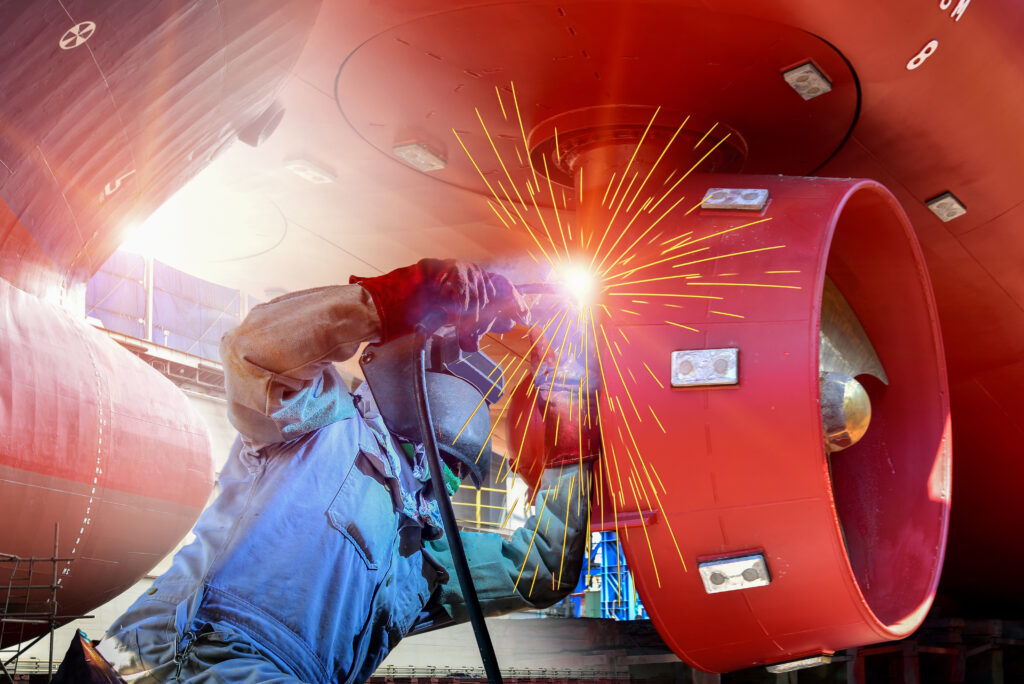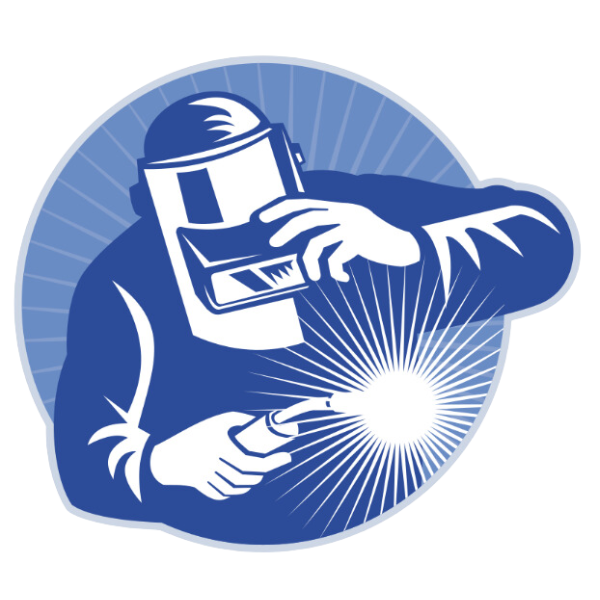Cost unit
Measure: International welder
- Measure number: 325/130/202
Welding is "the non-detachable joining of components using heat and/or pressure, with or without filler material". Of all the processes, fusion welding is the best known.

The basic package for international welders
From the 24 modules (E-Hand, MAG, TIG ST and TIG CrNi) we can put together a basic package with which the participant can achieve the transition to employment after 6 months in all the areas of application shown.
The training is individually tailored to the participant, depending on the current level of technical knowledge of the future welder. The level of knowledge is determined by means of a manual dexterity test. An individual qualification plan is drawn up for the participant based on the result of the manual dexterity test. If required, we also offer a trial/internship to ensure that the participant wants to learn this profession and is suitable for it.
The qualifications at our centre are carried out in accordance with the recommended training guidelines. In welding technology in particular, our training centre is based on the DIN EN ISO 9606-1 and 2 and EN 1090 standards. The programme consists of modules for practical training - welding of training pieces and test pieces - based on the relevant teaching and training plans of these guidelines.
The technical training of the participants aims to impart basic knowledge of the processes and material behaviour as well as knowledge of the relevant standards and safety regulations. The practical training provides participants with the comprehensive skills required for practical work in production.
The respective examinations to complete a module are carried out by TÜV-Rheinland at our premises.
Towards the end of the training programme, we support participants in choosing their future job. Targeted training is provided to prepare participants for their future area of responsibility in order to make the transition as smooth as possible.
Linguistic orientation in the vocational field: Welding
"Language orientation in the welding profession" is a course that can be attended prior to welding qualification programmes.
The language coaching is aimed at people with a migration background who intend to attend a welding qualification course. It does not matter what language skills the participants have, as the content is tailored to their individual needs.
There are no restrictions with regard to age, gender, country of origin or language background.
The 270-hour course is also closely linked to the qualifying measures in organisational terms. As a rule, the language coaching should immediately precede the welding course.
In the following, processes for welding metals practised at BSM are presented and the areas of application in the labour market are explained. The modules within a welding process build on each other.
- Manual electric arc welding or manual arc welding (modules 1-6) Arc welding is a fusion welding process used to weld metals. An electric arc generated by a direct or alternating current source produces intense heat that melts the metal at the joint between two workpieces. Where is manual arc welding used?
Manual arc welding is mainly used to join sheets and pipes made of unalloyed steels as well as cast steel and cast iron. Examples: Steel and metal construction, mechanical engineering, apparatus engineering, bridge construction, pipeline construction, locksmith work
- MAG welding (modules 1-6) MAG welding (welding using active gases) is an inert gas welding process and is used to weld different metals with an arc under an active gas. Where is MAG welding used? MAG welding is mainly used to join sheets and pipes made of unalloyed and high-alloy steels. Examples: Vehicle construction, structural engineering, steel construction, container construction, locksmith work, railing production, mechanical engineering.
- TIG welding ST (modules 1-6)
Tungsten inert gas welding (TIG) is a gas-shielded welding process in which a non-consumable electrode made of pure or alloyed tungsten is used.
Where is TIG ST welding used? TIG welding is used to join sheets and pipes made of unalloyed and low-alloy steels. Examples: Pipeline construction, apparatus engineering, tank construction, power station construction, mechanical engineering
- TIG CrNi welding (modules 1-6) Tungsten inert gas welding (TIG) is a welding process with shielding gas in which a non-consumable electrode made of pure or alloyed tungsten is used. Where is TIG CrNi welding used? TIG CrNi welding is used to join sheets and pipes made of high-alloy steels. Examples include Pipeline construction, apparatus engineering, tank construction, power plant construction, commercial kitchen equipment construction, hospital locksmiths, beverage and food industry
Your advantages
Manual electric arc welding or manual arc welding (modules 1-6)
Arc welding is a fusion welding process that is used to weld metals. An electric arc generated by a direct or alternating current source produces intense heat that melts the metal at the joint between two workpieces. Where is manual arc welding used?
Manual arc welding is mainly used to join sheets and pipes made of unalloyed steels as well as cast steel and cast iron. Examples: Steel and metal construction, mechanical engineering, apparatus engineering, bridge construction, pipeline construction, locksmith work
MAG welding (modules 1-6)
MAG welding (welding using active gases) is an inert gas welding process and is used to weld different metals with an arc under an active gas. Where is MAG welding used? MAG welding is mainly used to join sheets and pipes made of unalloyed and high-alloy steels. Examples: Vehicle construction, structural engineering, steel construction, container construction, locksmith work, railing production, mechanical engineering.
TIG welding ST (modules 1-6)
Tungsten inert gas welding (TIG) is a gas-shielded welding process in which a non-consumable electrode made of pure or alloyed tungsten is used.
Where is TIG ST welding used? TIG welding is used to join sheets and pipes made of unalloyed and low-alloy steels. Examples: Pipeline construction, apparatus engineering, tank construction, power station construction, mechanical engineering
TIG welding CrNi (modules 1-6)
Tungsten inert gas welding (TIG) is a welding process with shielding gas in which a non-consumable electrode made of pure or alloyed tungsten is used. Where is TIG CrNi welding used? TIG CrNi welding is used to join sheets and pipes made of high-alloy steels. Examples include Pipeline construction, apparatus engineering, tank construction, power station construction, commercial kitchen equipment construction, hospital locksmiths, beverage and food industry

